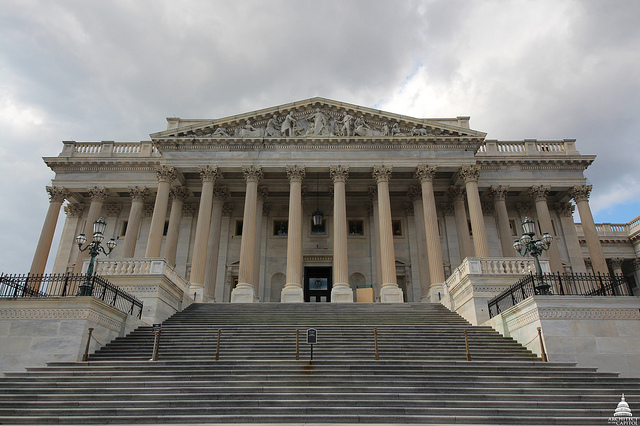
A new institutional design is required to deal with retrospective review of regulations.
Regulatory accumulation threatens the pace of innovation and growth in America, yet previous attempts to address it have proven unsuccessful. That is why we propose a new approach through the creation of a Regulatory Improvement Commission, which we argue is both politically and technically feasible. This institutional innovation for paring down redundant and outdated rules is described more fully in a 2013 paper we co-authored, and it has now been introduced as very similar bills in both the Senate (by Senators Angus King (I-ME) and Roy Blunt (R-MO)) and the House (by Representatives Patrick Murphy (D-FL), Mick Mulvaney (R-SC), and 20 co-sponsors).
Each President since Jimmy Carter has ordered agencies to do a “retrospective review” of existing regulations in order to identify those that are duplicative, obsolete, or have failed to achieve their intended purpose. However, as a 2007 U.S. Government Accountability Office (GAO) study indicated, these retrospective reviews have fallen well short of identifying problematic regulations for a variety of reasons, including insufficient transparency and a lack of resources. It is extraordinarily expensive and time-consuming to properly evaluate the costs and benefits of any substantial part of any major regulation. Ultimately, an agency has no control over the original enabling legislation as written by Congress.
Rather than getting wrapped up in ideological issues such as big versus small government, we view the question of regulatory accumulation as a problem of institutional design. There is a well understood political and technical process for the creation of a regulation that involves both the executive and legislative branches of government. Presented in the simplest terms, the process starts with the approval of legislation by the House and Senate, which is then signed into law by the President. Next, the appropriate agency goes through a specified rulemaking procedure, which includes soliciting and answering public comments. For significant rules (those expected to have an annual impact on the economy of $100 million or more), agencies must also get approval from the Office of Management and Budget.
Although the process for new rulemaking is well specified under current law, our regulatory system offers no well-defined process for undoing or improving a specific regulation after it has been adopted. The only real option is to jump through the full set of political and procedural hoops described above that created the original regulation.
Our proposal for a Regulatory Improvement Commission (RIC, or the Commission) takes a more streamlined approach. Modeled after the Base Realignment and Closure (BRAC) Commission, the RIC would be approved by Congress for a limited period of time. The Commission would be staffed primarily with personnel “borrowed” from federal agencies, and RIC members would be appointed by the President and the congressional leaders of both parties. Further, the Commission would have clear objectives, be completely transparent, and follow a strict timeline.
The Commission would focus on a limited list of regulations – say, 15 or 20 – to be considered for repeal or improvement. It would base its proposals on suggestions submitted through public comment, coupled with public testimony and a quantitative and qualitative assessment of the rules in consideration. The RIC’s list of proposals would then go to Congress for an up or down vote with no amendments, and finally to the President for approval.
By including both the legislative and executive branches in reviewing regulations, the RIC can adopt a streamlined process for the consideration of regulatory changes. In addition, the Commission would not break or change the current process for creating regulations, nor would it raise any constitutional questions. All it would require is enabling legislation and some attention to internal congressional rules.
Our proposal acknowledges the importance of politics in the regulatory process. Ultimately the basis for regulation rests on enacted legislation, which is the result of a long and complicated political process. Cost-benefit analysis alone, no matter how persuasive, cannot overcome legislative action.
Perhaps most important in the current political climate, the proposed Regulatory Improvement Commission should be acceptable to both Republicans and Democrats because it gives Congress “two bites” at the apple. The first bite is when the original enabling legislation for the Commission is passed. Initially, Congress may opt to keep certain regulations that are particularly controversial off the table, such as environmental regulations.
The second bite comes when the proposed package of regulatory changes goes to Congress for approval. If the package does not appropriately balance the interests of both Democrats and Republicans, Congress can vote the package down.
Importantly, the RIC would help build trust in the retrospective regulatory review process. Like the BRAC Commission, the proposed Regulatory Improvement Commission is a one-shot deal that must be re-authorized by Congress. If the initial Commission is successful, Congress may be more willing to authorize it again.
The Regulatory Improvement Commission can be compared to something that sounds superficially similar: the SCRUB Act, which stands for the Searching for and Cutting Regulations that are Unnecessarily Burdensome Act and was recently discussed by a House subcommittee. The SCRUB Act would set up an independent commission to review regulations and forward proposed changes or repeals to Congress. However, under the SCRUB Act, the regulatory changes would go into effect unless Congress passed a resolution rejecting them.
We view the SCRUB Act commission as both politically and technically infeasible compared to the Regulatory Improvement Commission. Politically, it would be impossible for Democrats to approve any commission that possesses effectively unlimited powers to undo regulations. Additionally, the SCRUB Act raises certain constitutional issues, such as the delegation of legislative authority to a commission, that are difficult to surmount. For these reasons, we view the Regulatory Improvement Commission as far more likely to be effective than the independent commission proposed in the SCRUB Act.
Institutional innovation requires both a willingness to believe that things can be different and pragmatism about what is possible. It is clear that modern economies require some way of pruning down regulatory accumulation. The Regulatory Improvement Commission would be a first step in that direction.
This essay is part of The Regulatory Review’s five-part series, Debating the Independent Retrospective Review of Regulations.
Pictured in the text are the steps leading to the House of Representatives. Photo Credit: Architect of the Capitol.





